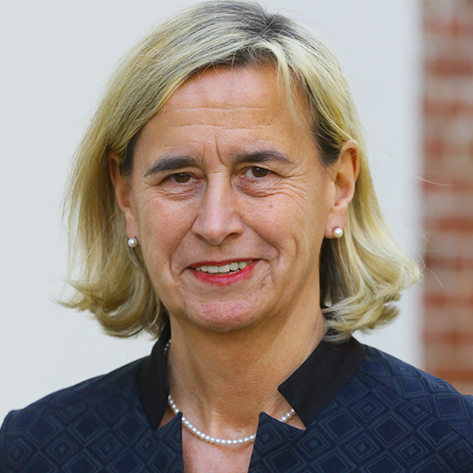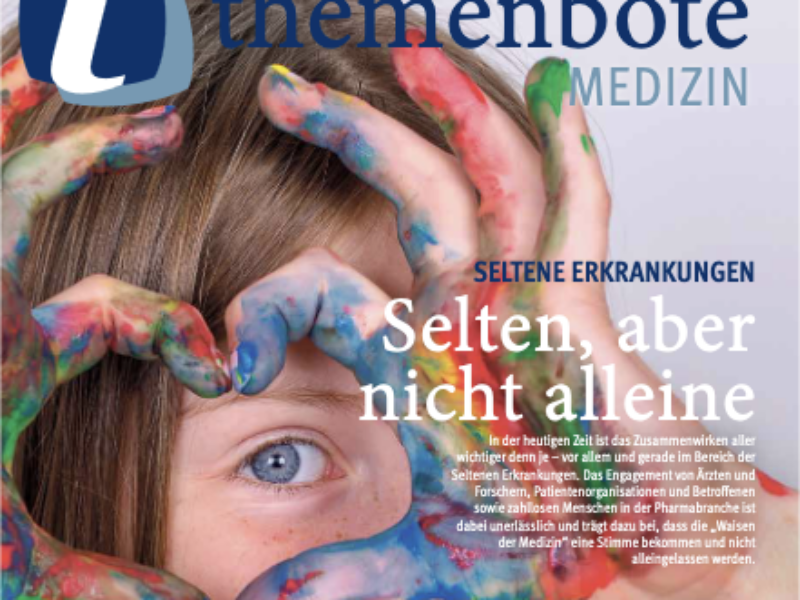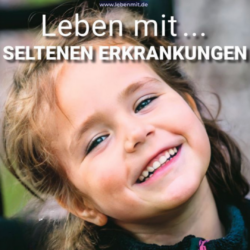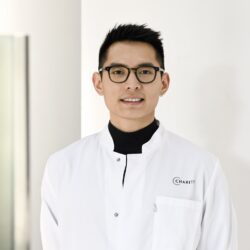Im Interview mit dem Themenbote Medizin stellt Professor Dr. Annette Grüters-Kieslich, Vorstandsvorsitzende der Stiftung, die Forschungsinitiative Alliance4Rare vor. Sie erläutert, was die Allianz ausmacht, wo ihre Schwerpunkte liegen und wie forschende Kinderärztinnen und -ärzte gezielt gefördert werden.

Frau Prof. Grüters-Kieslich, was setzt sich die Alliance4Rare zum Ziel?
Die Alliance4Rare vereint Menschen und Institutionen, die helfen wollen, die wachsenden Möglichkeiten der Präzisionsmedizin und den immensen Forschungsbedarf zu Seltenen zusammenzubringen. Zivilgesellschaft, Medizin und Forschung müssen Hand in Hand und synergistisch zusammenwirken, um die dringendsten medizinischen Bedarfe von Kindern mit Seltenen Erkrankungen schnellstmöglich mit aussichtsreichen Therapieansätzen zusammenzuführen.
Wie kam es zur Gründung dieser Forschungsinitiative?
Die Initiative ging von der Eva Luise und Horst Köhler Stiftung aus. Frau Köhler engagiert sich seit bald zwanzig Jahren für die „Waisen der Medizin“. Sie kennt deren Notlage, der große Forschungsbedarf liegt auf der Hand. In acht von zehn Fällen betreffen Seltene Erkrankungen Kinder und Jugendliche, viele werden früh versterben oder ein Leben lang behindert sein, weil wirksame Therapiemöglichkeiten fehlen. Uns war klar: Man darf die Teilhabe am medizinischen Fortschritt für diese Menschen nicht dem Zufall überlassen. Daher brauchen wir jetzt mehr Zusammenarbeit und gezielte Investitionen in die pädiatrische Forschung zu Seltenen Erkrankungen.
Wer ist Mitglied der Alliance4Rare und was sind die Forschungsschwerpunkte?
Das Forschungsnetzwerk umfasst derzeit die drei großen Universitätskinderkliniken in Berlin, Göttingen und Dresden sowie das Berlin Institute of Health (BIH). Durch die Aufnahme weiterer Standort- und Förderpartner soll es in den nächsten Jahren bundesweit verankert werden. Die notwendigen Mittel werden durch Spenden und Förderpartnerschaften eingeworben. Wir sind dankbar, dass die Friede Springer gGmbH den Start der Alliance4Rare sehr großzügig fördert. Aber natürlich braucht es weitere Unterstützung für ein nachhaltiges Wachstum der Initiative.
Der wissenschaftliche Schwerpunkt liegt auf Projekten, die für das Überleben sowie die Lebensqualität der Betroffenen vordringlich sind und ein hohes Innovationspotential haben. Im Rahmen unserer ersten Projektausschreibung wurden vielversprechende Anträge eingereicht. In diesen Tagen werden der Wissenschaftliche Beirat und die Steuerungsgruppe der Alliance4Rare über die Förderung entscheiden.
Die Alliance4Rare investiert unter anderem in ein sogenanntes Clinician Scientist-Programm. Können Sie erläutern, was das ist?
Forschung und Versorgung sind für Seltene Erkrankungen untrennbar. Wissenschaftliche Erkenntnisse müssen trotz geringer Fallzahlen zügig zu den Betroffenen gelangen. Das braucht Ärztinnen und Ärzte, die sich dem Spagat zwischen Krankenbett und Labor mit großem Engagement stellen. Im verdichteten Klinikalltag ist das jedoch zunehmend schwierig.
Um forschende Kinderärztinnen und -ärzte gezielt zu unterstützen, setzt die Alliance4Rare auf strukturierte Clinician Scientist Programme (CS4RARE). Diese ermöglichen den Teilnehmenden geschützte Forschungszeiten, in denen sie, ihre wissenschaftlichen Projekte vorantreiben. Summerschools und ein gezieltes Mentoring-Programm sorgen für Wissenstransfer und standortübergreifende Vernetzung auch über die Förderphase hinaus.
Welche Forschungsschwerpunkte verfolgen die ersten Teilnehmenden dieses Programms?
Am Universitätsklinikum Dresden forscht eine pädiatrische Immunologin zu Autoinflammatorischen Erkrankungen. Durch die Identifizierung neuer Biomarker arbeitet sie daran sowohl Krankheitsschübe besser vorhersagen als auch Therapien zielgerichteter steuern zu können.
In Berlin befasst sich ein junger Humangenetiker mit erblichen Bindegewebserkrankungen. Sein spezieller Fokus liegt auf familiär gehäuft auftretenden Erkrankungen der Hauptschlagader. Ziel ist, mit Genom- und Transkriptom-Analysen neue Mutationen zu finden, die bislang mittels konventioneller Diagnostik nicht erfasst wurden. Im besten Fall endet damit die diagnostische Odyssee für viele Betroffene.
An der Universität Göttingen erforscht unser dritter Stipendiat eine Gruppe von Seltenen Erkrankungen, die durch Mutationen im ATP1A3-Gen verursacht werden. Die Ursachen dieser neurologischen Störungen sind weitgehend ungeklärt. Unser Clinician Scientist will dazu beitragen, die Pathomechanismen zu identifizieren und das weltweit erste Drug Screening zu etablieren, um neue therapeutische Ansätze zu finden.
Die drei forschen also in sehr unterschiedlichen Bereichen, aber mit demselben Ziel: Den „Waisen der Medizin“ den Weg in eine gesündere Zukunft zu ebnen.
Ein weiteres Forschungsprogramm der Alliance4Rare ist die Plattform für Tiefendiagnostik CADS. Wie entstand die Idee für CADS und was beinhaltet es genau?
Patientinnen und Patienten mit Seltenen Erkrankungen warten im Schnitt sechs lange Jahre – in Einzelfällen sogar Jahrzehnte – auf eine gesicherte Diagnose. Diese ist aber enorm wichtig, selbst wenn noch keine Therapien existieren. Die Benennung des Leidens erleichtert für viele das Annehmen ihrer Situation und gibt eine gewisse Orientierung für den weiteren Weg. Auch für die behandelnden Ärztinnen und Ärzte ist die Diagnosestellung entscheidend, denn solange eine Krankheit nicht erkannt wird, lässt sich keine gezielte Therapie finden.
Hier ergänzt das Forschungsprojekt CADS, die diagnostischen Möglichkeiten, die in allen Alliance4Rare-Partnerkliniken vorgehalten werden. Für Patienten, bei denen bisher keine gesicherte Diagnose gestellt werden konnte, steht damit erstmals ein strukturierter Ansatz zur molekularen und klinischen Tiefenanalyse zu Verfügung. Basierend auf diesen Forschungsergebnissen diskutieren nationale und internationale Expertinnen fallbasiert neue Ansätze für Diagnose und Therapie. Auch hier kommt wieder der enge Schulterschluss von Forschung und Versorgung zum Ausdruck, der die Arbeit der Alliance4Rare ausmacht: Gemeinsam Zukunft schaffen.
Mehr Informationen: www.alliance4rare.de
Gesamte Ausgabe Themenbote Medizin Februar 2023



